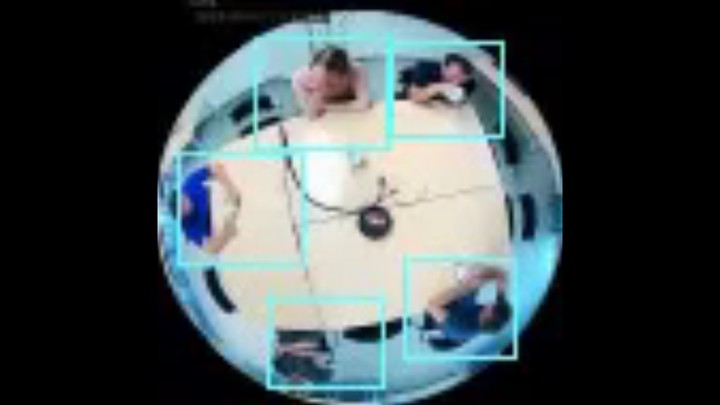How Low Can You Go? Privacy-preserving People Detection with an Omni-directional Camera
 Test set example showing detections on a 96px omnidirectional image
Test set example showing detections on a 96px omnidirectional image
Abstract
In this work, we use a ceiling-mounted omni-directional camera to detect people in a room. This can be used as a sensor to measure the occupancy of meeting rooms and count the amount of flex-desk working spaces available. If these devices can be integrated in an embedded low-power sensor, it would form an ideal extension of automated room reservation systems in office environments. The main challenge we target here is ensuring the privacy of the people filmed. The approach we propose is going to extremely low image resolutions, such that it is impossible to recognise people or read potentially confidential documents. Therefore, we retrained a single-shot low-resolution person detection network with automatically generated ground truth. In this paper, we prove the functionality of this approach and explore how low we can go in resolution, to determine the optimal trade-off between recognition accuracy and privacy preservation. Because of the low resolution, the result is a lightweight network that can potentially be deployed on embedded hardware. Such embedded implementation enables the development of a decentralised smart camera which only outputs the required meta-data (i.e. the number of persons in the meeting room).